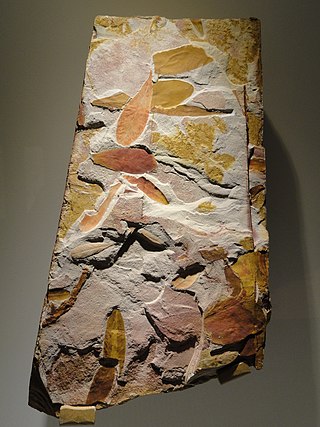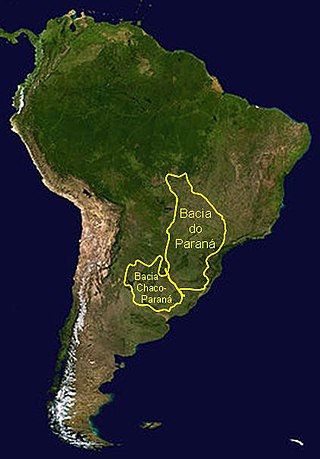
Rio Grande do Sul is a state in the southern region of Brazil. It is the fifth-most populous state and the ninth-largest by area. Located in the southernmost part of the country, Rio Grande do Sul is bordered clockwise by Santa Catarina to the north and northeast, the Atlantic Ocean to the east, the Uruguayan departments of Rocha, Treinta y Tres, Cerro Largo, Rivera, and Artigas to the south and southwest, and the Argentine provinces of Corrientes and Misiones to the west and northwest. The capital and largest city is Porto Alegre. The state has the highest life expectancy in Brazil, and the crime rate is relatively low compared to the Brazilian national average. Despite the high standard of living, unemployment is still high in the state, as of 2017. The state has 5.4% of the Brazilian population and is responsible for 6.6% of the Brazilian GDP.
Talian, or Brazilian Venetian, is a dialect of the Venetian language, spoken primarily in the Serra Gaúcha region in the northeast of the state of Rio Grande do Sul in Brazil. It is also spoken in other parts of Rio Grande do Sul, as well as in parts of Espirito Santo and of Santa Catarina.

Glossopteris is the largest and best-known genus of the extinct Permian order of seed plants known as Glossopteridales. The name Glossopteris refers only to leaves, within the framework of form genera used in paleobotany.

Glossopteridales is an extinct order of seed plants, known from the Permian of Gondwana. They arose at the beginning of the Permian, and the majority or all members of the group became extinct at the end of the Permian, during the Permian-Triassic extinction event. Possible Triassic records of the group have been recorded. The best known genus is Glossopteris, a leaf form genus. Other examples are Gangamopteris,Glossotheca, and Vertebraria.

Sacisaurus is a silesaurid dinosauriform from the Late Triassic (Norian) Caturrita Formation of southern Brazil. The scientific name, Sacisaurus agudoensis, refers to the city where the species was found, Agudo in the Rio Grande do Sul state, whereas Sacisaurus refers to Saci, a famous one-legged creature from Brazilian mythology, because among the dozens of fossil material unearthed, 35 right femora were collected whereas only 1 left femur was found.

The Caturrita Formation is a rock formation found in Rio Grande do Sul, Brazil. Its sediments were deposited in the Paraná Basin. The formation is from the Upper Triassic and forms part of the Santa Maria Supersequence in the upper section of the Rosário do Sul Group.

André da Rocha is a municipality in the state of Rio Grande do Sul, Brazil. It is surrounded by the municipalities Nova Prata, Protásio Alves, and Guabiju.

Mariana Pimentel is a municipality in the state of Rio Grande do Sul, Brazil. It is located approximately 75 km from the state's capital, Porto Alegre.

São Gabriel is a municipality in the state of Rio Grande do Sul, Brazil.

Konzhukovia is an amphibian genus that belongs to an extinct family Konzhukoviidae of temnospondyls, the largest clade of basal tetrapods including about 198 genera, 292 species, and more than half of which were alive during the early Mesozoic period. The animal was a predator that lived about 260 million years ago, and could get up to about three meters in length. Specifically, Konzukovia lived during the Permian, between 252 and 270 million years ago according to the type of rock the fossil was found in. There are three species within this genus, K. vetusta, K. tarda, and K. sangabrielensis, the first two originating from Russia while the latest originating from Southern Brazil. The discovery of this specimen in Southern Brazil provided more evidence to support the idea that during this animals existence, there was a “biological corridor” because of the supercontinent Pangea, allowing these species to be found so far apart from each other. Konzhukovia belongs to the family Archegosauridae, a family consisted of large temnospondyls that most likely compare to modern day crocodiles. Since the discovery of the latest species, K. sangabrielensis, Pacheco proposes that there must be the creation of a new family, Konzhokoviidae, a monophyletic group in a sister-group relationship with Stereospondlyi in order to accommodate the three species. Konzhukovia skulls usually exhibit typical rhinesuchid features including an overall parabolic shape, small orbits located more posteriorly, and the pterygoids do not reach the vomer. These animals were long-snouted amphibians that had clear adaptations made for fish catching, as well as exemplifying aquatic features.

The Paraná Basin is a large cratonic sedimentary basin situated in the central-eastern part of South America. About 75% of its areal distribution occurs in Brazil, from Mato Grosso to Rio Grande do Sul states. The remainder area is distributed in eastern Paraguay, northeastern Argentina and northern Uruguay. The shape of the depression is roughly elliptical and covers an area of about 1,500,000 km2 (580,000 sq mi).

The 2009 swine flu pandemic in Brazil began on April 25, 2009, with two people, spreading to 34 over the first two weeks. CDC calculate that Africa and Southeast Asia, which have 38% of the world's population, accounted for a disproportionate 51% of the deaths.
Supradapedon is an extinct genus of hyperodapedontine rhynchosaur from mid-late Triassic deposits of Tanganyika Territory, Tanzania. It is known from the holotype SAM-11704. The holotype and only specimen of Supradapedon was first assigned to a species of Scaphonyx, Scaphonyx stockleyi. This species was reassigned to its own genus by Sankar Chatterjee in 1980 and the type species is Supradapedon stockleyi. One study, Langer et al. (2000), concluded that Supradapedon is a synonym of Hyperodapedon and referred it to Hyperodapedon sp. However, the provisional validity of this genus has been commonly accepted since.

The Private Reserve of Natural Heritage (RPPN) of University of Santa Cruz do Sul (Unisc) is a protected area created in 2009, through Ordinance nº 16, of March 18, having an area of 221,39 hectares, being nowadays one of the largest protected area of this category (RPPN) in Rio Grande do Sul state, Brazil. This preservation area is within the Atlantic Forest Biome and the predominant vegetation is the seasonal deciduous forest.

Pampaphoneus is an extinct genus of carnivorous dinocephalian therapsid belonging to the family Anteosauridae. It lived 268 to 265 million years ago during the Wordian age of the Guadalupian period in what is now Brazil. Pampaphoneus is known by an almost complete skull with the lower jaw still articulated, discovered on the lands of the Boqueirão Farm, near the city of São Gabriel, in the state of Rio Grande do Sul. A second specimen from the same locality was reported in 2019 and 2020 but has not yet been described. It is composed of a skull associated with postcranial remains. It is the first South American species of dinocephalian to have been described. The group was previously known in South America only by a few isolated teeth and a jaw fragment reported in 2000 in the same region of Brazil. Phylogenetic analysis conducted by Cisneros and colleagues reveals that Pampaphoneus is closely related to anteosaurs from European Russia, indicating a closer faunal relationship between South America and Eastern Europe than previously thought, thus promoting a Pangea B continental reconstruction.
The Rio Bonito Formation is a geological formation of the Paraná and Pelotas Basins of Permian age. It is represented by a succession of cyclic sedimentary packages of sandstones, siltstones and shales which bear extensive deposits of coal that has been extracted since the 19th century. The Rio Bonito Formation was deposited in a coastal environment, formed by rivers, deltas, bays and estuaries with tidal plains, barrier islands and shallow marine platform, at a time when the Paraná Basin was a large gulf of the ancient supercontinent Gondwana. This gulf was open to the southwest, to the old ocean Panthalassa. The Rio Bonito Formation outcrops occur mainly in the eastern border of the Paraná Basin, in a narrow band in the states of São Paulo, Paraná, Santa Catarina, Rio Grande do Sul and Uruguay. The Rio Bonito Formation belongs to the second-order stratigraphic supersequence called Gondwana I.
Brasilodendron was a genus of lycophytes dating from the Permian. Plants were vascularized with reproduction by spores.
Brazilea is an extinct genus of algae. The species Brazilea helby and Brazilea scissa were located in outcrop Morro do Papaléo in the town of Mariana Pimentel, the geopark Paleorrota. The outcrop dates to the Sakmarian of the Permian.
Quadrisporites is an extinct genus of acritarchs. The species Q. horridus was located in outcrop Morro do Papaléo in the town of Mariana Pimentel in Brazil, the geopark Paleorrota. The outcrop is in the Rio Bonito Formation and date of Sakmarian in the Permian.

The Rio do Rasto Formation is a Late Permian sedimentary geological formation in the South Region of Brazil. The official name is Rio do Rasto, although in some publications it appears as Rio do Rastro.














